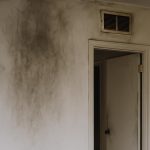
Car Collision Insurance Claims 101: What to Do Immediately After an Accident
Being involved in a car collision can be overwhelming, stressful, and confusing. In the heat of the moment, it’s easy to make mistakes that could complicate your insurance claim later on. Knowing the right steps to take immediately after an accident can help protect your health, your rights, and your financial well-being.
This guide walks you step by step through what drivers should do after a collision, from documenting the scene to contacting their insurer along with practical tips to avoid common mistakes.
Step 1: Prioritize Safety and Check for Injuries
The first priority after any accident is safety.
- Check yourself and passengers for injuries before exiting the vehicle.
- If anyone is seriously injured, call 911 immediately and request medical help.
- If the cars are in a dangerous spot (like the middle of a busy road) and it’s safe to do so, move the vehicles to the side. If not, turn on hazard lights to warn other drivers.
Pro Tip: Even if injuries seem minor, it’s best to seek medical attention right away. Some injuries like whiplash or concussions don’t show symptoms until hours later.
Step 2: Call the Police
In many states, you’re legally required to report an accident if it results in injury, death, or significant property damage.
- Call local law enforcement to file an official accident report.
- Cooperate with officers and provide accurate information but avoid admitting fault at the scene.
- Request a copy of the police report, as it will be crucial when filing your insurance claim.
Pro Tip: Even in minor fender benders, having a police report helps protect you from disputes later.
Step 3: Document the Scene Thoroughly
Clear evidence is one of your best tools when filing a claim. Use your smartphone to gather as much detail as possible.
- Take photos of all vehicles, the damage, license plates, skid marks, and road conditions.
- Capture wide shots of the scene and close-ups of damage.
- Write down the time, date, location, and weather conditions.
Pro Tip: If there are witnesses, ask for their names and contact information. Independent witness accounts often strengthen claims.
Step 4: Exchange Information with Other Drivers
Collect essential details from all parties involved, including:
- Full name, address, and phone number
- Driver’s license number
- License plate number
- Insurance company and policy number
- Vehicle make, model, and year
Pro Tip: Stay polite and professional but avoid discussing fault or making speculative comments like “I didn’t see you” or “It was my fault.” Let the insurers and authorities determine liability.
Step 5: Notify Your Insurance Company
Once everyone is safe and the scene is documented, contact your insurer promptly.
- Provide a clear account of what happened and share all documentation.
- Submit the police report when it becomes available.
- Ask about next steps for vehicle inspection, repair estimates, and rental coverage (if included in your policy).
Pro Tip: Some insurers have mobile apps that allow you to upload photos and documents immediately, speeding up the claims process.
Step 6: Understand Your Policy Coverage
Before repairs begin, make sure you know what your insurance covers. Key areas to review include:
- Collision coverage: Pays for damage to your car regardless of fault.
- Liability coverage: Pays for the other driver’s damages if you’re found at fault.
- Medical payments or personal injury protection (PIP): Helps cover medical expenses.
- Rental reimbursement: Provides a temporary vehicle while yours is being repaired.
Pro Tip: Reviewing your policy beforehand can help you make informed decisions and avoid unpleasant surprises.
Step 7: Keep Detailed Records
Throughout the process, keep an organized file of:
- All correspondence with your insurer
- Repair shop estimates and receipts
- Medical bills and treatment notes (if applicable)
- Notes from any conversations related to your claim
Pro Tip: Having everything documented makes it easier to dispute delays or errors in your settlement.
Common Mistakes to Avoid
- Leaving the Scene Too Soon: Even in minor accidents, you could face penalties for not staying until authorities clear you.
- Admitting Fault at the Scene: Liability is determined after investigation. Stick to the facts.
- Failing to Report the Accident: Some drivers avoid reporting minor accidents to keep rates low but this can backfire if the other party files a claim later.
- Delaying Medical Treatment: Waiting too long can hurt both your health and your claim, as insurers may argue your injuries weren’t related to the accident.
- Accepting the First Settlement Offer Too Quickly: Insurers may offer a low settlement to close the case fast. Consider consulting a professional if you’re unsure.
When to Call a Public Adjuster
Sometimes, insurance companies undervalue claims, delay settlements, or deny coverage altogether. If you feel your claim isn’t being handled fairly, a licensed public adjuster can help you:
- Review your policy in detail
- Negotiate with the insurance company on your behalf
- Maximize your settlement so you can recover fully from the accident
Final Thoughts
Being involved in a car collision is stressful but knowing exactly what to do afterward can give you confidence and peace of mind. By following the right steps, prioritizing safety, documenting the scene, and working carefully with your insurer, you can protect yourself from unnecessary setbacks and ensure you get the compensation you deserve.
Need Help with Your Insurance Claim?
If you’re struggling with a denied or underpaid car accident claim, Funari Public Adjusters can fight for you. Our experienced team ensures you get the maximum settlement you’re entitled to, so you can focus on recovery, not red tape.
Contact Funari Public Adjusters today to schedule a consultation.



